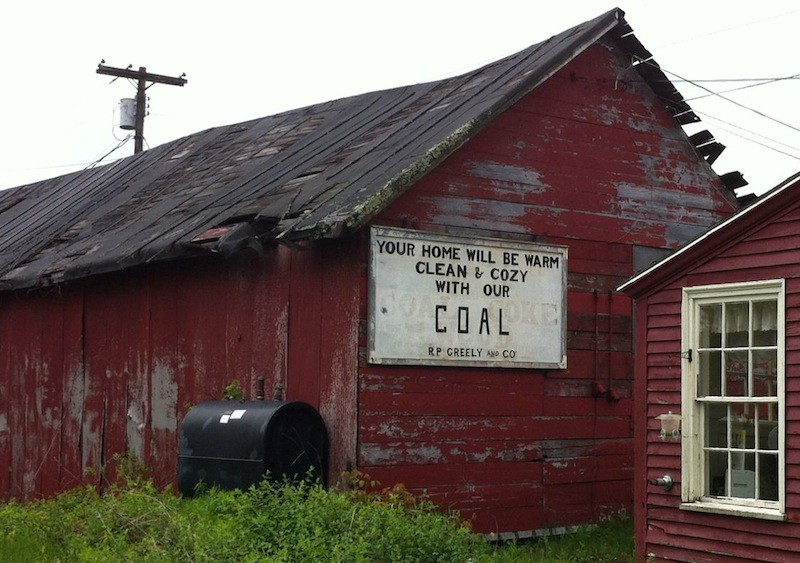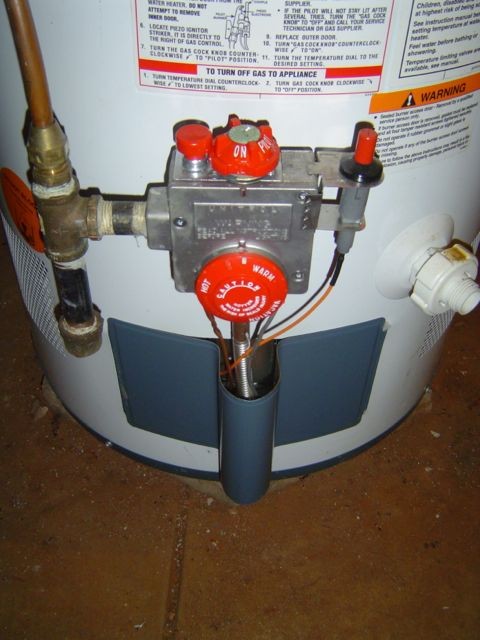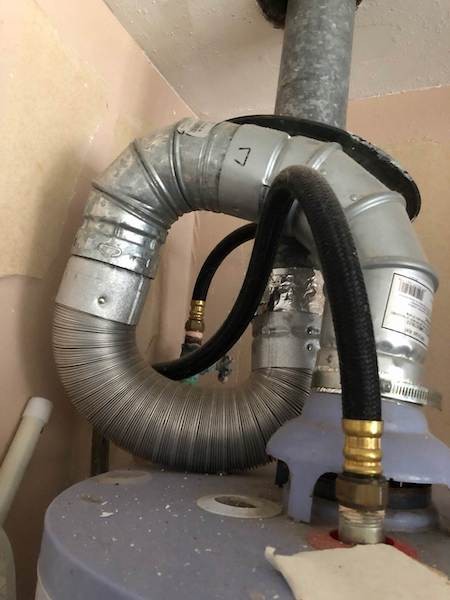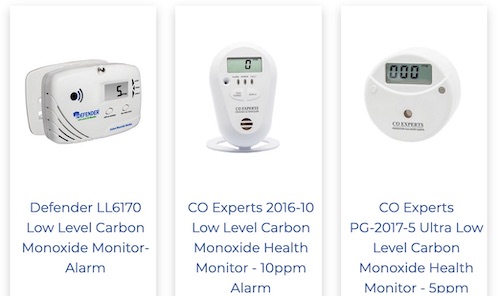Combustion Safety 101: Three Types of Problems

We are now ten short days from the winter solstice and many of us in the Northern Hemisphere have been in heating season for a while. That means there’s a lot more combustion happening in homes than there was in the summer. We humans have millennia of experience with burning stuff in our homes, and we’ve developed a lot of knowledge about how to do it safely. Unfortunately, many homes still have combustion safety problems, so I’m going to do a little series on some the most important things you should know about this topic.
Let me say right up front, though, that I have a definite bias regarding combustion in homes. If you saw the articles about the improvements I’ve made in my house over the past year, you know that I ripped out the gas furnace and water heater and even had the gas meter removed. I like electricity because it’s a great way to move energy and, even better, it keeps getting cleaner.
So, my first recommendation for combustion safety is usually to get rid of the combustion appliances. I realize, however, that not everyone can do that, so let’s talk about what you can do to keep your house from burning down or your family from being poisoned by carbon monoxide. Last week I was part of a discussion of combustion safety, and you can see where I’ll be going with this series by watching the video of the BS + Beer Show, where Ross Tretheway and I discussed this topic for an hour and a half.
Three types of combustion problems
Living safely with combustion appliances in your home means paying attention to three general types of combustion safety issues.
1. Fuel problems. This could be anything related to the fuel being used for combustion:
- Gas leaks
- Oil spills
- Coal dust
- Termites or other critters in firewood

The safest situation is when all the fuel is kept outdoors, as with a propane tank or woodshed. The most prevalent issue in this category is gas leaks. People who do a lot of combustion safety testing tell me that a really high percentage of the homes they test have gas leaks. Like 80 to 90 percent high.
2. Combustion problems. The second type is when the combustion itself is poorly contained. Any combustion appliance with open flames inside the house requires caution. Fireplaces and gas cooktops are the primary places where you might encounter open flames in a house, but some gas furnaces and water heaters have flames that could escape. Be careful with flammable materials near any combustion appliances. Keep the area around the base of your gas water clear. This is another reason that getting your house checked for gas leaks is a good idea.
Preventing a house fire is something you can do by paying attention to your combustion appliances. Sometimes, though, combustion problems occur because of the gas company. This happened in Massachusetts in 2018, when the pressure in the gas lines was too high, and 40 homes exploded or caught on fire.
3. Venting problems. Burning a fuel produces a variety of different combustion products, from soot (carbon) to carbon monoxide. Even when the combustion process works as designed, it still produces water vapor, which goes into your indoor air if it’s not vented to the outdoors. In winter, that could be a problem in some houses, unless you like water dripping down your windows or mold growing on your walls. The problems here stem from stupid design (e.g., unvented fireplaces), stupid building codes (e.g., allowing natural draft water heaters in conditioned space), and stupid installations (e.g., vents that don’t draft because of insufficient rise, like the one below).

Any of the three types of problems listed here could be really serious, and you should do what you can to avoid them. Aside from gas leaks, though, most of the combustion safety problems in homes are related to venting. When products of combustion get into the indoor air in your home, whether intentionally or unintentionally, they can make you sick and damage your house. In the next article in this series, I’ll cover the products of combustion.
Allison Bailes of Atlanta, Georgia, is a speaker, writer, building science consultant, and founder of Energy Vanguard. He is also the author of the Energy Vanguard Blog. You can follow him on Twitter at @EnergyVanguard.
Buy a low level carbon monoxide monitor at TruTech Tools*
Related Articles
A Ventless Gas Fireplace Is a Liability
Unvented Natural Gas Space Heaters Should Be Removed
Accidental Dehumidification – A Preventable Mess
* This is a TruTech Tools affiliate link. You pay the same price you would pay normally, but Energy Vanguard makes a small commission if you buy after using the link.
NOTE: Comments are moderated. Your comment will not appear below until approved.
This Post Has 10 Comments
Comments are closed.


Allison, I don’t know if you are aware of some of the history of combustion safety testing. Here is a summary of some of it.
https://www.researchgate.net/publication/346955263_Combustion_Safety_His…
John
John, thanks for the link. I’m not sure if I saw you present that at Affordable Comfort/ACI in Austin or not. Some of it is familiar, but not all of it.
Nice picture of a poorly done flue.
Question as to the statement:
“stupid building codes (e.g., allowing natural draft water heaters in conditioned space.”
In the summer, it should draft well, if sufficient air makeup is provided and the flue is designed and installed per installation manuals such as Simpson DuraVent’s manual, and in the winter, the same.
Odd high pressure differential due to high winds may cause temporary poor ventilation, but it should be very temporary, if the flue was well designed for the site.
Direct vent hot water heaters would be my preference, but the costs of those are twice the price of natural draft hot water heaters, and the warranties are worse, if you buy the better natural draft hot water heaters.
Natural draft hot water heaters also act as a way to get Radon out of a basement, unlike direct vent hot water heaters.
Do you see any progress on Direct vent hot water heaters coming down in price, any time soon?
Regards, George
Natural draft appliances vent better in the winter because of the temperature differential, which means a larger difference in density (colder air is that more dense than warmer air).
Why does everyone just look at the lowest price? A natural draft combustion appliance is using indoor air for combustion and they often have a standing pilot. You have already paid to heat that air that is now drafting out of the house (including when the heater is not even heating). A standing pilot uses 2-3 gal. of propane (or equivalent gas) a month just for the pilot.
George,
I work in Hillbilly country…….cabins, shacks and no building codes. Draft hood appliances are common in my region, consequently I recognize their benefits, but also their dangers. I think the intent of Allison’s comment concerning draft hood water heaters is that, as a rule, in following the norms of modern building science, they have no place.
In fact, careful study of draft hood appliances in general will show, that even when following “best” practice recommendations, draft hood appliances will at times, not “vent” as intended……. for evidence of this – just make a careful examination of say, a dozen operating draft hood water heaters…….
I should have added to my previous note the following caveat: it is very important to always have a working carbon monoxide detector in all levels of the house, if using natural gas heating appliances.
As long as the heat exchangers do not develop a leak in direct vent natural gas heating appliances (intake air from, and exhaust to the outdoors), it is pretty safe to use them, as far as carbon monoxide in the house goes.
If concerned about the risk of carbon monoxide from natural gas heating appliances, then electric is a safer choice.
But in my area of the country, electricity has a much higher ongoing cost per BTU, than natural gas. So many people in my area have switched to natural gas for heating. Doing so has another benefit in that if a power outage occurs, you can still have heat, as long as you have a small generator to run the furnace fan, via a transfer switch. It can get pretty cold in the winter in Northeast Ohio, and power outages have been known to last a week during the winter.
– George
I am surprised at the statement that up to 80-90% of homes have gas leaks. I have been BPI certified (including Heating) since 2006 and have done a lot of combustion and gas leak testing. I have rarely found gas leaks in homes or small businesses here in the Central Vermont area where about 23% of homes use propane (natural gas is not available)to heat their home and a larger percentage that directly heat their hot water with propane. I would estimate only a few percent had gas leaks.
I have taken a lot of training in combustion science and heating systems and I have a lot of experience in assessing, repairing and installing heating systems. In my experience, I would put poor venting systems high on the list, especially with natural draft combustion appliances. I have many photos of such problems, such as undersized vents, no slope to vents and installations in a small room with other appliances competing for the little air available, such as another combustion appliance and a clothes dryer. The second most common problem that I see is undersized gas lines, which is a leading cause of CO in combustion appliances, especially propane ranges. That includes all of the semi-rigid copper tubing that I have found with crimps in the tubing.
As to the comment about water vapor from a flue causing water to drip from windows, I don’t see that as being a problem. Yes the flue gas from propane combustion is water vapor from the chemical process plus the water vapor in the combustion air, or >9% water vapor. It will take a lot of combustion gas to significantly raise the RH in the house, and it would be putting all of the other stuff from the flue gases into the house as well. That amount of back drafting is very rare, although that would always apply to any vent-free combustion appliance.
Where that moisture does become a problem is when a metal flue pipe goes above the roof in a cold climate. The colder it is outside, the quicker the flue gas will cool down and the more of that water vapor will condense to a liquid, which is now acidic, and run back down the flue. The cold can also cool down the flue gases so much that the appliance backdrafts into the house.
Brad I am with you on the percentage of gas leaks. The data from the PSCo and Westside programs listed in the above Power Point presentation shows 8.1 and 7.6 percents. The 1000 furnace sample in the same presentation reports 8.3%.
Well done .
I had the gas company install contractor back out 2 hours after install for a gas leak. Back out week later. Finally gas company fixed leaks for good .
Inlet for makeup air sized way too small . Boiler been tripping out been four service calls to gas company service plan !!
Frustrated hell ya !!
I regularly do energy audits in Salt Lake City. During the past year I have found gas leaks in about 75% of the homes I have audited. There have been a number of times where my Bacharach sniffer doesn’t immediately find things, but my eyes are reacting leading me to keep investigating.
I find it crucial to run the gas appliances to find all the leaks. It is incredible how few installers use pipe dope on the connections inside the furnace box.